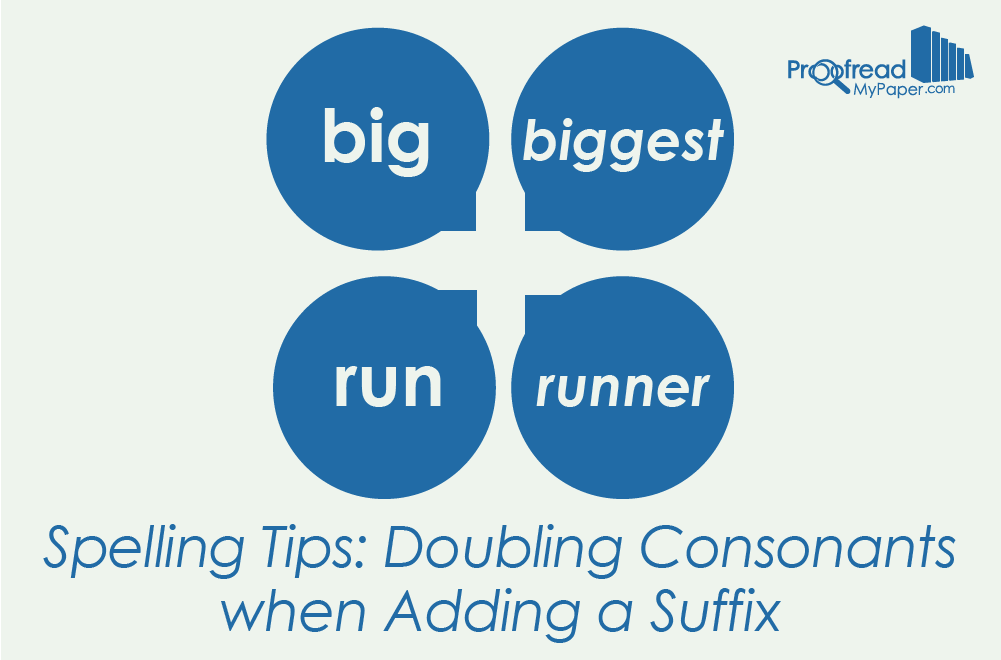The “doubling up” rule (or the “1:1:1 rule”) is one of the few rules in English spelling that is correct most of the time. Given how confusing English can be, we find this reliability oddly comforting. Let’s look at how it works.
What Is the Doubling Up Rule?
The doubling up rule states that, when adding a vowel suffix (e.g., “-ing” or “-ed”) to a single-syllable word that ends with one vowel followed by one consonant, we should double the final consonant. For instance, “dig” gains an extra “g” when changed to “digging.” Additional examples include:
|
Base Word (Single Consonant) |
With Vowel Suffix (Double Consonant) |
|
Star |
Starring, Starred, Starry |
|
Run |
Running, Runner |
|
Big |
Biggest, Bigger |
As you can see with “starry” (i.e., lit by stars), “y” is sometimes treated as a vowel for this rule. Other words like this include “sunny,” “blurry,” and “furry.”
The Exceptions
The only universal spelling rule in English is that there’s actually no universal spelling rule in English. As such, we need to mention a few exceptions: words that end in “w,” “x” or “y.” These letters aren’t usually doubled in English, so single-syllable words that end in a vowel plus “w,” “x” or “y” don’t require doubling the final letter when adding a vowel suffix:
|
Base Word (Single Consonant) |
With Vowel Suffix (Double Consonant) |
|
Play |
Playing, Player, Played |
|
Snow |
Snowing, Snowiest, Snowed |
|
Box |
Boxing, Boxer, Boxed |
Multi-Syllable Words
Things get trickier with words more than one syllable long. Some still require doubling the final consonant when adding a vowel suffix, such as:
|
Base Word (Single Consonant) |
With Vowel Suffix (Double Consonant) |
|
Begin |
Beginning, Beginner |
|
Regret |
Regretting, Regretted |
|
Control |
Controlling, Controlled, Controller |
These are generally words where the final syllable is stressed.
Find this useful?
Subscribe to our newsletter and get writing tips from our editors straight to your inbox.
When the final syllable of a multi-syllable word is not stressed, however, the final consonant is not usually doubled. Examples include:
|
Base Word (Single Consonant) |
With Vowel Suffix (Single Consonant) |
|
Open |
Opening, Opened |
|
Listen |
Listening, Listened, Listener |
|
Happen |
Happening, Happened |
In some cases, whether to double the final consonant depends on the suffix added. “Prefer,” for example, gains an extra “r” in “preferred” or “preferring.” This is because, in both, the final syllable is stressed. However, no doubling is required in “preference,” since the final syllable here is unstressed.
Multi-Syllable Exceptions
There are some words that don’t follow the pattern above, but with which we still double the final letter when adding a vowel suffix to clarify the pronunciation.
With “format,” for example, we typically place the stress on the first syllable. But we still double the “t” when adding a suffix to show that it is pronounced with a short vowel sound. Thus, we pronounce “formatted” as “for-mat-ed,” not “for-mate-ed,” and the double “t” before the suffix helps to clarify this.
There are also some words that end in an “-l” that are conventionally spelled with a single consonant in American English, but that take a double consonant in British or Canadian English. For example:
|
Base Word |
American English (Single Consonant) |
British/Canadian English (Double Consonant) |
|
Travel |
Traveled, Traveling, Traveler |
Travelled, Travelling, Traveller |
|
Cancel |
Canceled, Canceling |
Cancelled, Cancelling |
|
Model |
Modeled, Modeling, Modeler |
Modelled, Modelling, Modeller |
In other words, multi-syllable words can be tricky! Using the pronunciation to guide your spelling will usually help, but don’t forget to check specific words in a dictionary if you’re unsure whether to double the final consonant when adding a vowel suffix. Likewise, it’s important to proofread your work carefully and double check any words that you’re not 100% sure are spelled correctly.
